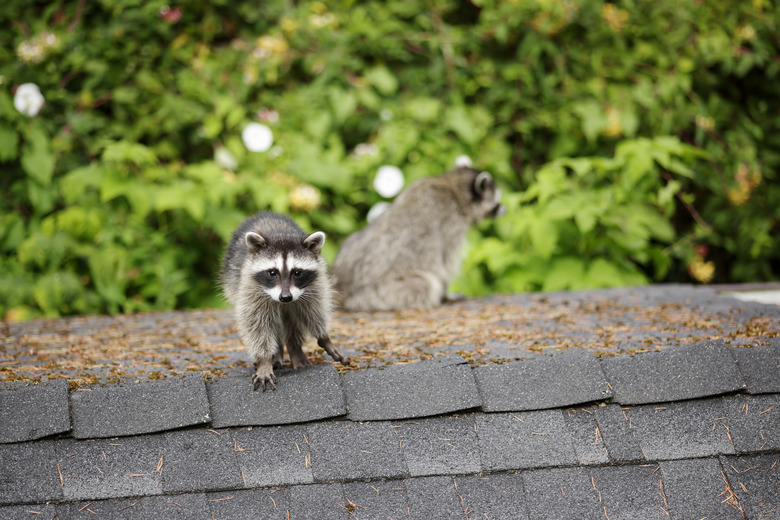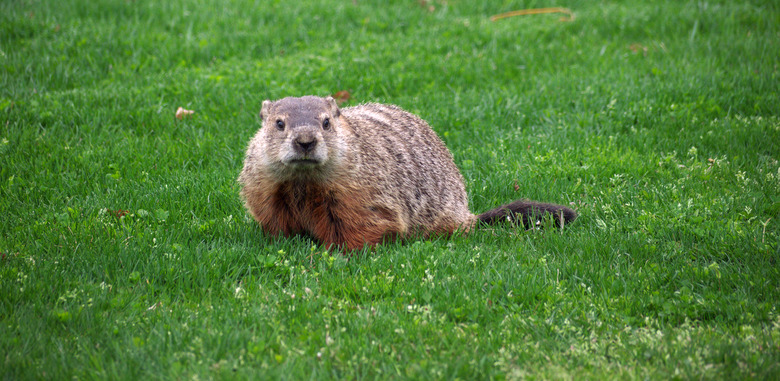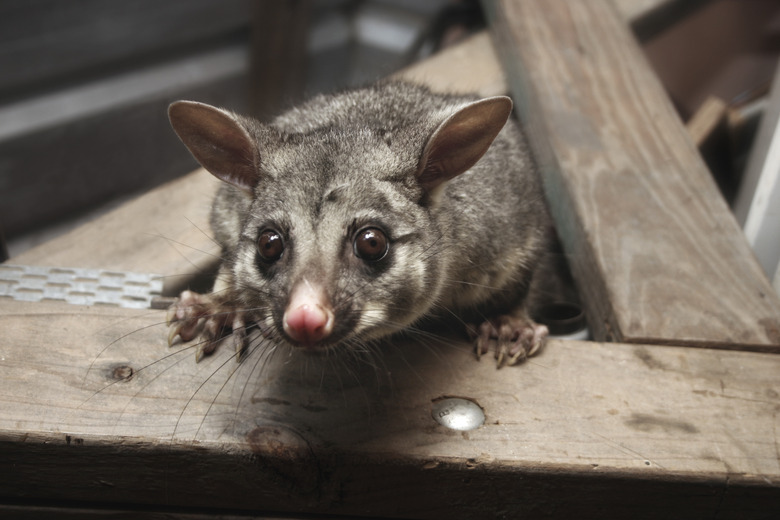Professional Wildlife Removal: What You Need To Know
We may receive a commission on purchases made from links.
If you hear things go bump in the night in your attic or basement — it's probably not a ghostly presence, but actually a small animal that has taken up residence in your home. Although these little creatures may very well be cute, they are wild animals that could ultimately lead to damage to your property and the spread of disease. No matter the type of small critter, it's a problem that calls for the services of a wildlife removal expert.
There are a few reasons these nuisance wildlife find our houses so attractive. A loss of their natural habitat to human development is one big reason we see animals (who normally live in wooded areas) exploring suburban and even urban neighborhoods. Pet food that is left outdoors and unsecured garbage cans also lure a variety of wildlife. Our houses themselves are inviting since they provide warm shelter and a place to raise their young — but they need to be removed swiftly for the health and safety of your household.
Why Use a Wildlife Removal Company?
Why Use a Wildlife Removal Company?
Even if you think your house is really sealed up, animals can be quite resourceful when it comes to finding openings in a home. Small rodents and even snakes fit through small openings in a house foundation. Some species of bats can fit through cracks and holes that are only 1/2 inch wide. And raccoons are adept at climbing chimneys and setting up house inside chimney flues.
Professional wildlife removal not only involves getting the animals out of the house, but it also makes sure they don't get back inside. The wildlife removal expert, usually called a wildlife control operator, is trained to get out the animal or animals and then seal whatever holes, cracks, or vents provided the animals an entry point in the first place (also known as the exclusion method).
But before you call a wildlife removal company, it is important to remember that wildlife control is different from pest control services. The wildlife control operator is trained to deal with what the industry calls "nuisance" animals, such as raccoons, opossums, skunks, squirrels, snakes, and the like. The wildlife removal expert's first job is to capture the animals, so they should be familiar with the many regulations regarding the release or the disposal of nuisance animals. Wildlife control experts can also assist you with dead animal removal — if you were unlucky enough to discover a dead opossum or squirrel in your attic or crawlspace. A pest control company, on the other hand, primarily deals with killing insects and small rodents and preventing their return.
Members of the National Wildlife Control Operators Association (NWCOA) have access to training and certification for dealing with different types of wildlife. While the overall techniques for removal and exclusion are much the same for all animals, there are specific ways to handle animals like bats or stinging insects like carpenter bees.
Hiring a Wildlife Removal Expert
Hiring a Wildlife Removal Expert
If you're in need of humane wildlife removal, the Humane Society of the United States recommends seeking a referral for a nuisance wildlife control operator from a local humane society or from a wildlife rehabilitator, who is someone who deals with sick, injured, or orphaned animals with the intention of returning them to the wild. The NWCOA also maintains a list of members on its website.
As when hiring any contractor, get a few estimates for the job. The wildlife removal contractor should have the necessary licenses and should be insured. Be wary of contractors who give you an estimate over the phone. In some cases, phone estimates are fine for routine situations, such as when dealing with groundhogs in the lawn, but problems inside the house usually require an on-site inspection.
Wildlife Removal Contracts
Wildlife Removal Contracts
In addition to the project's cost and payment schedule — the contractor should not ask for more than 50 percent up front — the contract should list the following:
- type of animal involved
- a list of the entry points
- whether there are young present
- how the removal will take place
- what happens after removal
- how the entry points will be sealed
Most contractors will provide photos taken during the initial inspection so that you can see the extent of the problem, and if the strategy calls for trapping the animals, the contract should also specify how often the traps will be checked. (Note that the traps should not be placed outside for the safety of the animals.)
If you wish, you can discuss your preferences for how the animal will be treated after it is captured and incorporate that into the contract. Although it may seem like a humane solution to relocate an animal to a wooded area or even a park, that can be problematic. Some experts believe that relocation can spread disease, and relocated animals often have a high mortality rate.
Additionally, relocation is actually illegal in many states, or your wildlife removal operator must have a permit to relocate the animal. In many cases, the only option is to release the animal on your property or destroy it (with the exception of protected species, which cannot be destroyed). Whatever animal you're dealing with, a qualified operator should be able to explain your options.
Wildlife Removal Methods
Wildlife Removal Methods
There are a number of extraction and preventative methods a contractor can use, and many projects require the use of more than one method.
References
Trapping Methods
There are live traps where the animal enters but cannot leave. Another method is the use of one-way doors — the animal pushes through to the outside, but the design of the trap prevents it from reentering the home. There is even one specifically designed for snakes.
There is also a specific type of one-way door that is effective against bats that are nesting in attics. The contractor will first seal all of the entry points but one, where they will install the door. The bats leave easily through the door, but the angle of the funnel and its slippery surface prevent them from coming back in the same way. Once the attic is empty, the last hole is sealed.
Direct Capture Methods
Direct capture methods mean the contractor dresses appropriately — including animal-handling gloves and a respirator mask — to capture and remove animals. They may use nets or a catchpole, which is a pole with a heavy-duty cable attached to it that can be looped around the animal. Direct capture is often used when there are baby animals present that are too young to make their way into a trap or a one-way door.
Exclusion Methods
Once the area is clear, the wildlife removal contractor will seal the entry points using standard construction materials, such as sheet metal, metal screens and the like. Many contractors will guarantee the methods they used to keep animals out for up to one year.
As a homeowner, you should check on the condition of the exclusion methods a few times a year, particularly in the fall and spring. Roof vents, ridge vents, and soffit vents should be in good repair or enclosed in metal screening. Install a chimney cap to keep animals from nesting in the flue, and keep nearby trees trimmed and pruned so that animals can't use the tree's branches to reach the roof and look for an entry point.


